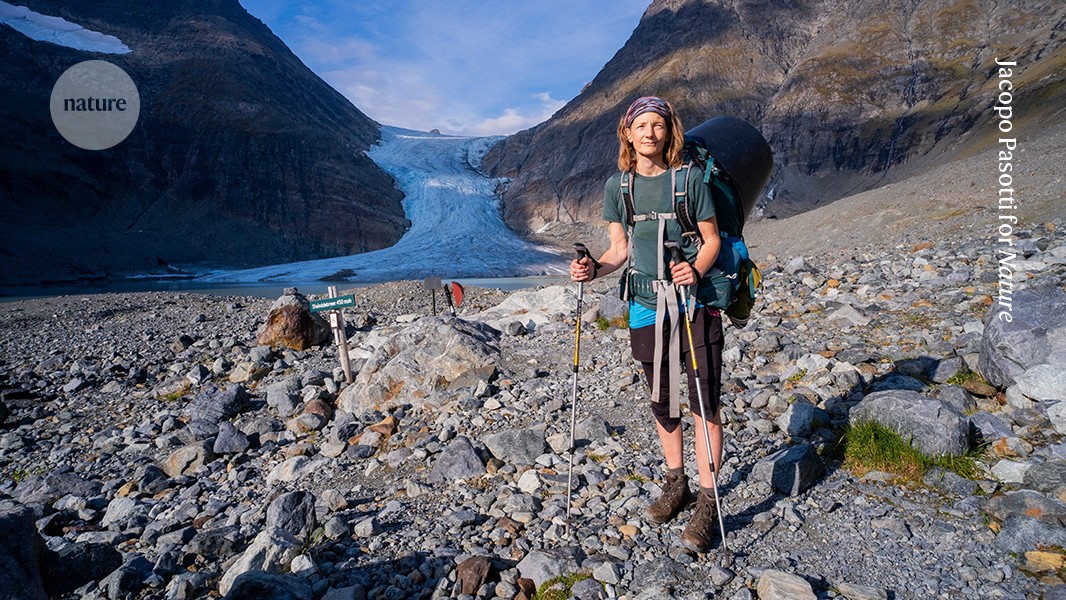“In this picture, I’m visiting Steindalsbreen, a glacier in the Lyngen Alps, just east of Tromsø in Norway, where I’m based. The glacier has retreated drastically: it’s slumped in the middle, is thinning around its margins and its tongue has melted into the growing glacial lake behind me.
Glaciers are powerful agents of erosion. As they flow, they grind the rock beneath them, creating hollowed-out areas that fill with water to form lakes as the glaciers retreat. This is common in regions such as Norway, where the bedrock is hard.
I’m interested in the glacier’s melt water: it often contains beneficial chemical elements or nutrients, either dissolved in the water or bound to fine particles, but sometimes it carries toxic metals, depending on the type of rock that the glacier sits on. I see myself as a glacier-forensics expert, uncovering what has happened beneath the glacier, like investigating a crime.
I direct the Centre for ice, Cryosphere, Carbon and Climate — a centre of excellence in Tromsø funded by the Norwegian Research Council.


